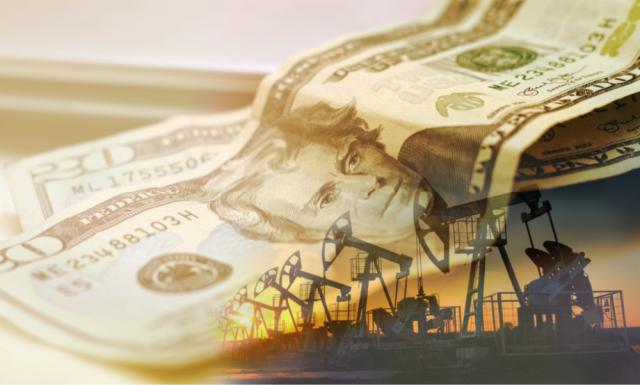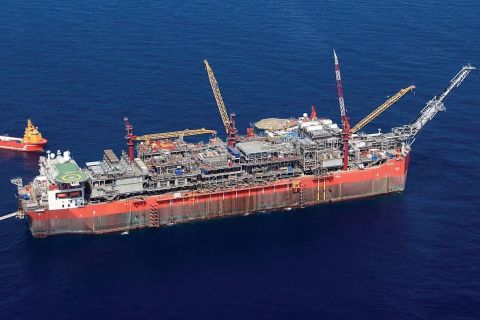
(Source: Shutterstock.com)
E&P and oilfield service (OFS) companies looking to refinance debt amid continued volatility and a global pandemic may find themselves facing another challenge.
“What we’re seeing today is that it’s not only very expensive, but it is actually very challenging to refinance this debt,” Arindam Das, group head of consulting for Westwood Global Energy Group. “As a consequence of that, we are likely to see a lot of debt restructuring and defaults in H2 2020.”
About $140 billion worth of debt is due to mature between 2020 and 2022 in the U.S. oil and gas market. At more than 55%, the majority of the debt is non-investment or speculative grade.
This comes as the oil and gas industry endures an unprecedented downturn and tough market conditions give rise to more bankruptcy filings.
Speaking on the refinancing costs during a recent Westwood macro outlook webinar, Das said the average yield at the end of first-quarter 2020 was about 4% for all U.S. corporate entities. However, looking at investment-grade E&Ps and OFS the yields being asked are about 7% to 10%. That increases to between 12% and 17% for non-investment grade, he said.
“But more importantly, as you get into highly speculative—B+ [and below] credit rating, you can start to see that it gets really high,” Das said, up to a 21% average bond yield for OFS companies with such ratings in today’s environment.
In addition to high refinancing requirements, the sector faces limited access to capital, according to Moody’s Investors Service.
“Vast majority of sub-investment grade OFS issuers face limited access to capital markets and restructuring and defaults are accelerating in the sector,” Moody’s said in a July report. The bond credit rating business added: “Corporate default rates are rising, and oil and gas is among the hardest-hit sectors. E&P companies have less availability under bank facilities after the spring redetermination of their borrowing bases, raising their liquidity and credit risk, especially for lower-rated issuers with restricted access to capital markets.”
Moody’s reported 15 corporate defaults in the oil and gas sector during the first half of the year. Expectations are for “distressed exchanges to continue to rise in tandem with corporate defaults,” with many firms opting to file for bankruptcy.
Data show that is already happening. Citing a report from Haynes and Boone LLP, Das said there were about 23 E&P and 18 OFS bankruptcies as of June 30.
Those numbers have already increased with Chapter 11 filings in July by fracking company BJ Services, California Resources Corp. and frac sand supplier Hi-Crush Inc.
“It’s not all-inclusive, but it’s a pretty good reflection of what’s happening in the U.S. market,” Das said. He pointed out there has been a lot of unsecured debt and speculative issuances, resulting in a significant amount of debt that is at risk.
Haynes & Boone forecasts about 100 bankruptcy filings will happen in 2020. The firm said in the report that although oil prices have stabilized around $40/bbl, after plummeting from $63/bbl in January to negative territory in April, it is not enough for the majority of the heavily leveraged shale producers.
“So, we expect to see a lot more defaults over the course of H2 2020 if things don’t improve,” Das said.
Recommended Reading
Exclusive: Carbo Sees Strong Future Amid Changing Energy Landscape
2024-03-15 - As Carbo Ceramics celebrates its 45th anniversary as a solutions provider, Senior Vice President Max Nikolaev details the company's five year plan and how it is handling the changing energy landscape in this Hart Energy Exclusive.
ShearFRAC, Drill2Frac, Corva Collaborating on Fracs
2024-03-05 - Collaboration aims to standardize decision-making for frac operations.
The Need for Speed in Oil, Gas Operations
2024-03-22 - NobleAI uses “science-based AI” to improve operator decision making and speed up oil and gas developments.
Remotely Controlled Well Completion Carried Out at SNEPCo’s Bonga Field
2024-02-27 - Optime Subsea, which supplied the operation’s remotely operated controls system, says its technology reduces equipment from transportation lists and reduces operation time.
Oceaneering Won $200MM in Manufactured Products Contracts in Q4 2023
2024-02-05 - The revenues from Oceaneering International’s manufactured products contracts range in value from less than $10 million to greater than $100 million.






